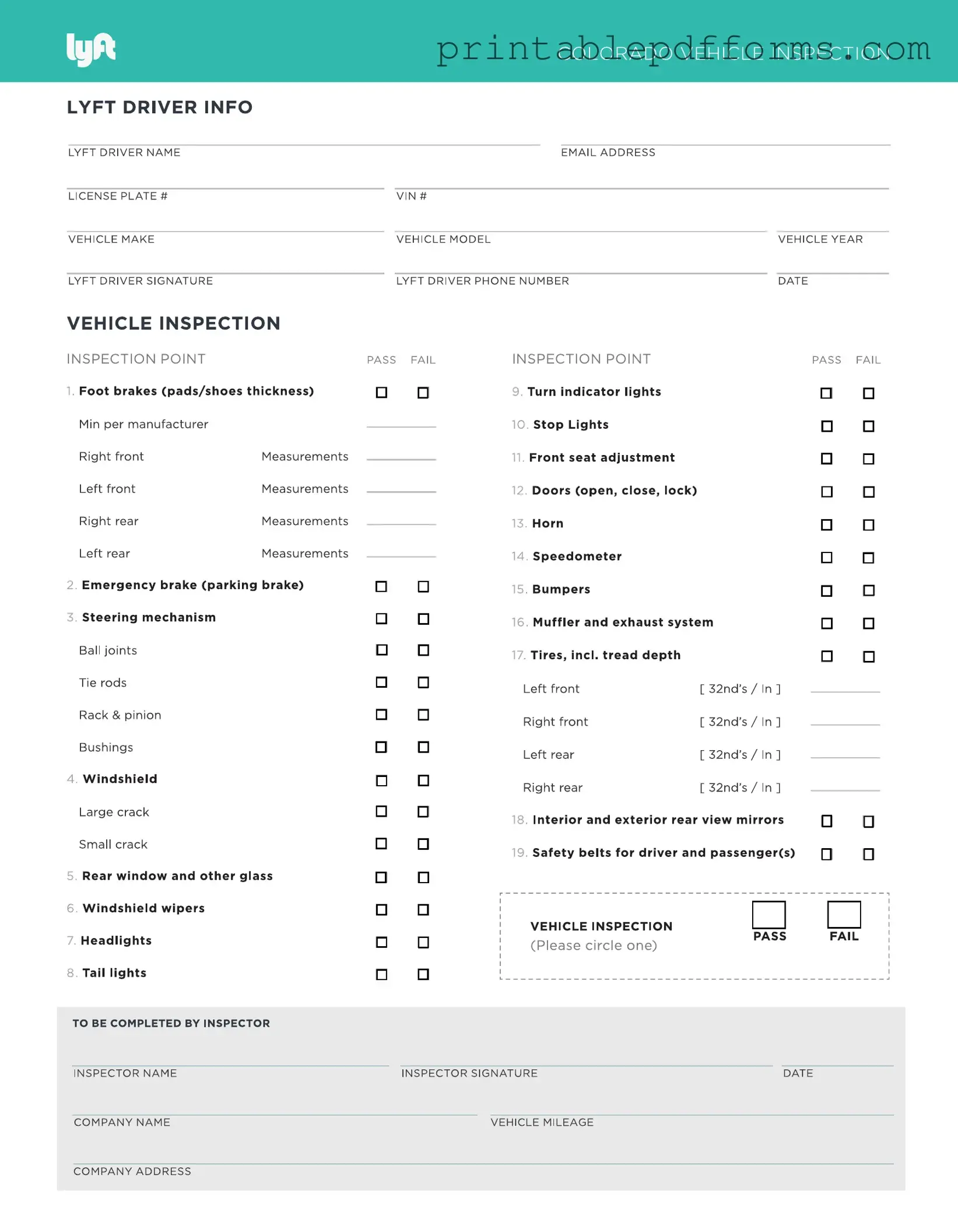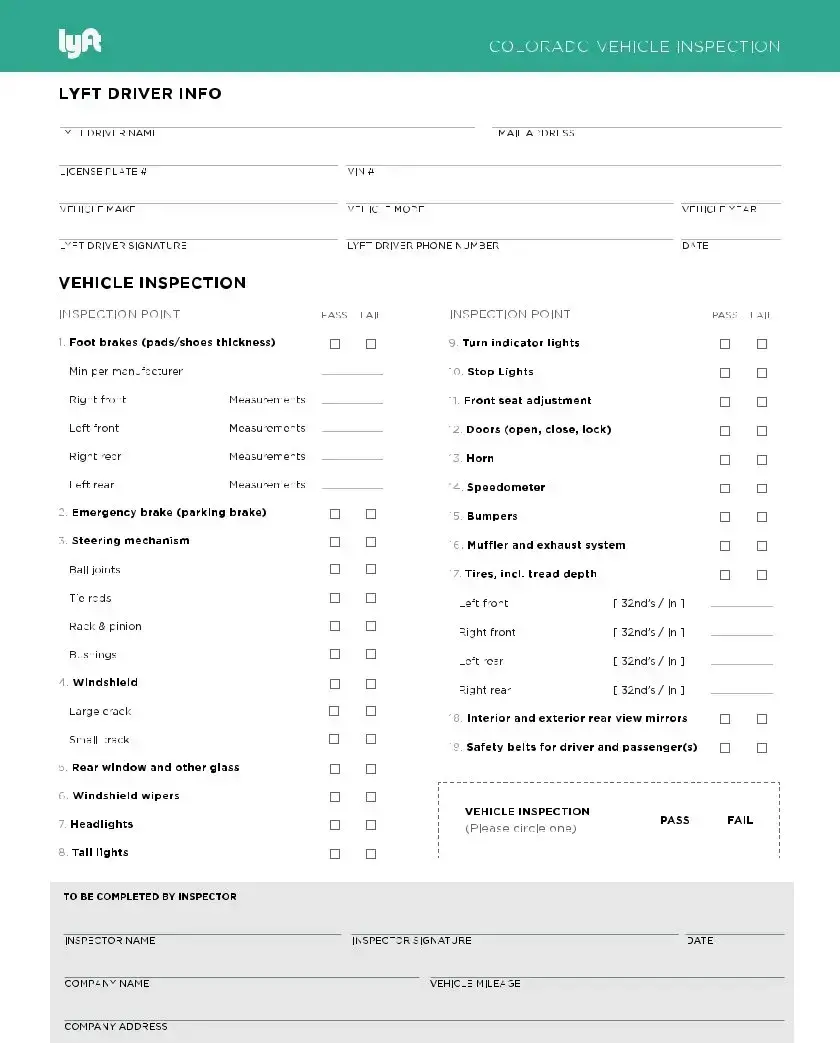The Lyft Inspection form is a document that drivers must complete to ensure their vehicle meets safety and operational standards. This form helps maintain a high level of safety for both drivers and passengers. It typically includes a checklist of various vehicle components that need to be inspected, such as brakes, lights, and tires.
Safety is paramount in ridesharing. The Lyft Inspection form ensures that all vehicles used for rideshare services are in good working condition. By requiring this inspection, Lyft aims to protect both drivers and passengers from potential accidents caused by vehicle malfunctions.
The responsibility of completing the Lyft Inspection form falls on the driver. It is the driver's duty to ensure that their vehicle is inspected regularly and that the form is filled out accurately. This process often involves taking the vehicle to a certified mechanic or inspection facility.
Typically, the Lyft Inspection form must be completed once a year. However, if any significant repairs or changes are made to the vehicle, it may be necessary to complete the inspection sooner. Always check Lyft’s guidelines for any updates or changes to this requirement.
What happens if my vehicle fails the inspection?
If your vehicle fails the inspection, you will not be able to drive for Lyft until the necessary repairs are made and the vehicle passes a subsequent inspection. It’s essential to address any issues promptly to ensure safety and compliance with Lyft's standards.
You can obtain the Lyft Inspection form through the Lyft driver app or the Lyft website. It may also be available at designated inspection locations. Make sure to use the most current version of the form to avoid any issues during the inspection process.
If you lose your Lyft Inspection form, you can usually retrieve a copy through the Lyft app or website. It’s also a good idea to keep a digital copy for your records. If you encounter difficulties, contacting Lyft support can help you resolve the issue.
While drivers can conduct a preliminary check of their vehicle, the official Lyft Inspection form must be completed by a certified mechanic or an approved inspection facility. This ensures that the inspection meets Lyft’s standards and provides an unbiased assessment of the vehicle’s condition.
What should I do if I have questions about the inspection process?
If you have questions about the inspection process or the form itself, reaching out to Lyft support is a good first step. They can provide detailed guidance and clarify any concerns you may have. Additionally, connecting with other Lyft drivers can offer valuable insights and tips based on their experiences.

